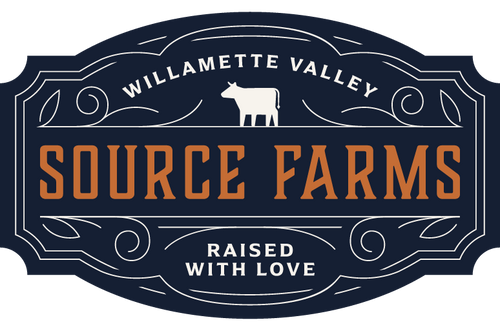The term “regenerative agriculture” is seemingly everywhere, appearing across the news media, on food labels, in docuseries and documentaries. But what is it, exactly? And why is it so important?
Over the last century, farmers have been under pressure to maximize yield and efficiency to meet high demand and low prices—often at the expense of healthy soil. Mono-cropping, agrochemicals and other industrialized practices have contributed to degraded soil and biodiversity loss around the world.
Regenerative agriculture seeks to solve some of those problems through farming practices that work with nature, rather than against it. By adopting farming techniques that mimic natural cycles, regenerative agriculture can build healthy soil, restore biodiversity and sequester carbon from the atmosphere—all while producing nutritious food.
Origins of regenerative agriculture
One of the most exciting things about regenerative agriculture is that we can look to history to know that it works. The principles of regenerative agriculture are less of a new phenomenon than they are a revival of traditional farming practices that were lost after the industrial revolution. Indigenous farmers around the world have long used these practices, and continue to use these practices in many communities today.
Many regenerative farming techniques, such as mob grazing, are mimicking natural systems that once existed in places like the Serengeti and the North American plains. Ruminant animals (such as buffalo, deer and wildebeest) evolved alongside grasslands and were moved across the landscape by apex predators, including humans—building some of the richest soil on the planet. Regenerative grazing systems seek to do the same thing with modern livestock, moving animals around a pasture to mimic those natural migration patterns. Other regenerative practices, like composting and mulching, are similar to the cycles of the forest floor, where fallen leaves blanket the forest and decompose into the soil.
Regenerative agriculture principles
Regenerative agriculture is not so much a prescribed set of farming practices as it is a mindset and an approach to farming. The regenerative mindset comes from a holistic viewpoint, one which sees all things in nature as intricately intertwined: what benefits one thing likely benefits another. These guiding principles are meant to inspire that mindset, keeping a keen eye on soil health above all else.
- Disturb the soil as little as possible: Ploughing, tilling, and turning the soil disrupts vital fungal networks and microbial populations underground, releasing carbon and other nutrients from the soil. No-till or no-dig farming systems and perennial pastures help prevent this loss.
- Always keep a living plant in the ground: Living roots are vital to feed the soil microbes underground. Without a living root in the ground, these microbes will die. Keeping the soil covered is also important to prevent the loss of carbon and other nutrients.
- Prioritize diversity: Different plants play different roles in a pasture or ecosystem and each plant feeds different microbial populations below ground. The more diversity, the more vibrant and resilient the system.
- Feed the soil: Soil should be regularly fed with natural fertilizers like compost or manure to build organic matter and keep the microbes, worms and insects healthy underground.
- Incorporate animals: Animals are magic for the soil. Grazing animals like cows and sheep help grasses photosynthesize and sequester carbon, while chickens provide much-needed nitrogen (via their manure) for plants.
- Minimize artificial or synthetic inputs: Regenerative farming avoids the use of pesticides, herbicides and synthetic fertilizers—all of which can have negative effects on the soil, harming soil microbes and making plants dependent.
Environmental benefits of regenerative agriculture
Captures carbon
Through a process called “carbon sequestration,” living plants—and particularly perennial grasses—capture carbon from the atmosphere and convert it into sugars in their roots. When animals are added to the system, they help sequester even more carbon by encouraging the grass to grow back.
Every time a cow or a sheep grazes on grass, the plant is encouraged to pull more carbon from the air to photosynthesize, growing deep underground roots that store carbon in the soil. When that grass is left in the ground, rather than ripped up or tilled under, carbon stays stored underground and isn’t released into the atmosphere.
The climate benefits of carbon sequestration on pastures are potentially huge. A 2016 study from Michigan State University found that regenerative grazing practices have the potential to fully offset the emissions of American agriculture.
Prevents flooding and drought
When soil is healthy and rich in organic matter, it has a higher water absorption rate and water holding capacity. Deep root systems and fungal networks in the soil trap rainwater and keep it underground, so that the soil stays moist even in periods of drought.
These same deep root systems help water infiltrate into the soil after a heavy rain, rather than sitting on the surface and flooding. Even a small increase in organic matter can increase the soil’s ability to hold water by thousands of gallons per acre.
Prevents runoff and ocean hypoxia
When agricultural land floods, excess rainwater is washed into nearby waterways—and it takes any fertilizers, chemicals and manure with it. Excess nutrients like nitrogen and phosphorus (from fertilizer and manure) cause algae blooms in rivers and streams, which reduce the amount of oxygen in the water and harm fish and other aquatic life. When these nutrients eventually make it into our coastal oceans, they continue to suck oxygen from the water, leading to ocean “dead zones” where no life can thrive.
Because healthy soil can absorb and hold more water, it’s less likely to experience runoff. And because regenerative farms avoid the use of synthetic nitrogen fertilizers, any water that does run off is less likely to cause problems in our waterways. Moving animals around the pasture also prevents the concentrations of manure that are common in feedlots and intensive grazing operations.
Improves biodiversity
Biodiversity is one of the key markers of environmental health. Diversity is the building block of healthy ecosystems—where plants, insects, fungi and animals work in tandem to maintain balance in any given place.
A regenerative pasture is planted with many varieties of plants and grasses, each with their own role to play within the system and their own unique benefits to the soil. Some plants have long taproots that help aerate the soil, while others, like clover and peas, are “nitrogen fixers,” meaning they pull nitrogen from the atmosphere and convert it into usable nutrients for other plants. A mixed pasture system builds diversity below ground as well, inviting many different soil microbes, worms and insects to thrive.
Diversity also helps prevent crop loss and other problems associated with extreme weather. When a farm relies on one particular crop, it’s more susceptible to pest and mold damage. But a biodiverse ecosystem has natural protections in place. If one crop suffers, it has others to rely on. And the plants, animals and microbes work together to maintain biological balance.
Nutritional benefits of regenerative agriculture
Good soil is the basis of good nutrition. We are what we eat, and we are also what we eat eats. When an animal eats a diet of diverse grasses, it increases what’s known as “phytochemical richness”—the thousands of compounds like carotenoids, alkaloids and other antioxidants that are good for our health—in its meat, dairy or eggs. Studies also show that pasture-raised animals produce meat, dairy and eggs that are lower in omega-6 fatty acids and higher in heart-healthy omega-3s.
The same goes for plants. Plants feed from soil as they grow, absorbing nutrients into their leaves, stems and roots. When fruit and vegetables are grown in biologically diverse soil, they’re naturally richer in beneficial nutrients and phytochemicals. These phytochemicals are also responsible for the color and flavor of plants, so phytochemical-rich foods appear more vibrant and taste better, too.
What does a regenerative farm look like?
Regenerative farms are often mixed systems that produce many different crops including meat, dairy or eggs. But they may also just grow fruits, vegetables or nuts. On food labels, you can look for terms like “pasture-raised,” “organic” and “grass-fed” — though none of these terms guarantee regenerative practices. The very best way to know whether a farm is regenerative is to get to know your farmer, engage and ask questions. Most farmers are proud of their work and are happy to share.


